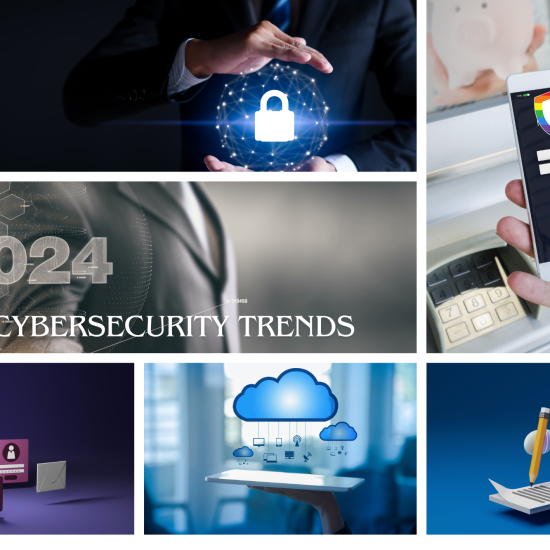Why Compliance is important for a business?
The business world is technologically advancing and becoming more data-oriented. It has become the need of the hour for organizations to leverage information technology optimally to improve their operational efficiency, gather more data for analytics, and empower their workforce.
With new industry standards and regulatory requirements impacting all industries, cybersecurity compliance becomes a driving force underlying business success. As the number and severity of cyber-attacks increases, industry standards organizations and governments seek to enforce cybersecurity by establishing more stringent compliance requirements. Organizations need to be compliant with industry and government regulations and take necessary and prescribed actions following the discovery of a data breach. Companies found to be non-compliant may face stiff fines and penalties should they suffer a breach. Strict adherence to cybersecurity compliance requirements reduces the risk of a data breach and the associated response and recovery costs, as well as the less-quantifiable costs of a breach such as reputation damage, business interruption, and loss of business.
In this article, you will read about:
What is Compliance?
Types of Data Subject to Cybersecurity Compliance
What is cybersecurity compliance in your sector?
How to Create a Cybersecurity Compliance Program?
Strengthen your Cybersecurity with Rainbow Secure
What is Compliance?
In general, compliance is defined as following rules and meeting requirements. In cybersecurity, compliance means creating a program that establishes risk-based controls to protect the integrity, confidentiality, and accessibility of information stored, processed, or transferred.
However, cybersecurity compliance is not based on a stand-alone standard or regulation. Depending on the industry, different standards may overlap, which can create confusion and excess work for organizations using a checklist-based approach.
Types of Data Subject to Cybersecurity Compliance
A data breach can be potentially devastating to your company, and the types of information you store and the process will determine how valuable that data is to potential hackers. Broadly speaking, cybersecurity compliance is concerned with three categories of data:
Personally Identifiable Information (PII)
Personally identifiable information includes any information that uniquely identifies an individual, such as:
- First and last name
- Date of birth
- Social security number
- Address
- Mother’s maiden name
Personal Health Information (PHI)
Protected health information includes information that could be used to identify an individual or details regarding their health history or treatments, such as:
- Medical history
- Records of admissions
- Prescription records
- Information about medical appointments
- Insurance records
PHI and PII do overlap, although PHI focuses on insurance information, healthcare records, and other information that could be stolen from a medical provider.
Financial Information
Financial data includes information about payment methods, credit card numbers, and other details that could be used to steal an individual’s identity or financial resources. Stolen credit card numbers, for instance, can be used to make unauthorized purchases. Sensitive financial data includes:
- Social security numbers
- Credit card numbers
- Bank account numbers
- Debit card PINs
- Credit history and credit ratings
Other sensitive data that may be subject to state, regional, or industry regulations include:
- IP addresses
- Email addresses, usernames, and passwords
- Authenticators, including biometrics such as fingerprints, voice prints, and facial recognition data
- Marital status
- Race
- Religion
What is cybersecurity compliance in your sector?
Businesses are required to comply with all relevant government laws, rules, and regulations, including those rules and regulations about data privacy. There is no choice here; either the organization complies or risks losing permission to operate. To run your company efficiently, you’ll need to understand what kinds of data you’re processing as well as what regulations are required of your industry.
1. Healthcare
The Health Insurance Portability and Accountability Act (HIPAA) is perhaps the most well-known cybersecurity regulation because it impacts all of us. HIPAA requires healthcare organizations, insurers, and third-party service providers to implement controls for securing and protecting patient data and conduct risk assessments to identify and mitigate emerging risks. These requirements, designed to protect patient privacy in the healthcare industry, predate many modern cybersecurity threats and have grown and changed since first enacted in 1996. The increasing use of the Internet of Things (IoT) in the medical field has made cybersecurity compliance with HIPAA regulations more important than ever.
2. Financial services
The most common set of regulations is found in the Federal Financial Institution Examination Council handbook (FFIEC IT). The handbook was recently updated to include a new emphasis on continuous monitoring and business continuity management both internally and across the supply chain. Another regulation is the Service Organization Control (SOC) Type 2 (SOC2). Developed by the American Institute of Certified Public Accountants (AICPA), Soc 2, pronounced “sock two” more formally known as Service Organization Control 2, reports on various organizational controls related to security, availability, processing integrity, confidentiality, or privacy. The standard for regulating these five issues was formed under the AICPA Trust Services Principles and Criteria.
In addition to protecting digital infrastructure, financial services companies must also comply with the Gramm-Leach-Bliley Act. This Act requires financial institutions – companies that offer consumers financial products or services like loans, financial or investment advice, or insurance – to explain their information-sharing practices to their customers and to safeguard sensitive data.
3. Energy sector
The Colonial Pipeline breach is the most recent in a long line of cyberattacks against the U.S. energy sector. As per the Cost of Data Breach report by IBM and Ponemon Institute oil and energy companies are at heightened risk of ransomware attacks due to their weak cybersecurity performance. And nearly 100 of these organizations are 4.5 times more likely to experience such an attack.
It’s critical that these companies immediately assess their security programs to discover any gaps. They must also ensure that they comply with the North American Electric Reliability Corporation – Critical Infrastructure Protection (NERC CIP) cybersecurity standards. Energy companies must also comply with the Federal Energy Regulatory Commission’s (FERC) Critical Infrastructure Protection (CIP) Standards.
4. Consumer businesses
General Data Protection Regulation (GDPR) instituted new requirements for how businesses – including U.S. businesses – collect and store the private data of European Union citizens. Fines for non-compliance are high; up to €20,000,000 or 4% of global revenue, and the EU is not shy about enforcing them.
In 2018, the California Consumer Privacy Act (CCPA) enacted similar legislation. The CCPA gives consumers more control over the personal information that businesses collect about them and the CCPA regulations guide how to implement the law. In May 2021, the Commonwealth of Virginia passed a Consumer Data Protection Act, which adds data protection assessment requirements.
Consumer businesses that handle credit card payments must also follow regulations from the Payment Card Industry Security Council’s Data Security Standard (PCI DSS).
5. Government
In the wake of the recent SolarWinds supply chain attack, the government is doubling down on regulations to address today’s persistent and evolving threats.
In May 2021, the Biden administration issued an Executive Order (EO) to protect federal infrastructure. Among other things, the EO requires federal agencies to adopt new standards and tools to ensure the security of their software supply chains, including criteria to monitor and evaluate the security practices of third-party developers. Federal contractors are also required to notify customers if a cyber-attack may have impacted their data.
If you operate in the government sector check out what Federal Information Security Management Act (FISMA) means for you and how you can monitor FISMA compliance.
How to Create a Cybersecurity Compliance Program
Your cybersecurity compliance program should be unique to your company and depend largely on the type of data you process and the regulatory requirements that pertain to your industry. It may seem like an intimidating task because there is no one-size-fits-all approach. However, following the five steps below can help you start developing your compliance program and meet regulatory compliance requirements.
1. Creating a Compliance Team
Forming a compliance team is necessary when implementing a thorough compliance program. In general, IT teams typically handle most cybersecurity processes. However, all departments within an organization need to work together to maintain a good cybersecurity posture and help with compliance measures.
As organizations continue to have started to move their business-critical operations to the cloud, it has become pertinent to create an interdepartmental workflow and communicate across business and IT departments.
2. Setting Up a Risk Analysis Process
Although naming conventions vary by compliance program, there are four basic steps in the risk analysis process:
- Identify Any information systems, assets, or networks that access data must be identified.
- Assess: Review the risk level of data and classify the risk level of each type. Determine where high-risk information is stored, transmitted, and collected. Rate the risk of all locations that data will pass through in its lifecycle.
- Analyze: After assessing risk, you need to analyze risk. Traditionally, organizations use the following formula:
Risk = (Likelihood of Breach x Impact)/Cost
- Set Tolerance: Decide to mitigate, transfer, refute or accept any determined risks.
3. Setting Controls: How to Mitigate or Transfer Risk
The next step would be to set up security controls that mitigate or transfer cybersecurity risks. Cybersecurity control is a mechanism to prevent, detect and mitigate cyberattacks and threats. The controls can be technical controls, such as passwords and access control lists, or physical controls such as surveillance cameras and fences.
These controls can also be:
- Encryption
- Network firewalls
- Password policies
- Cyber insurance
- Employee training
- Incident response plan
- Access control
- Patch management schedule
4. Creating Policies
Policies document these compliance activities, controls, or guidelines that IT teams, employees, and other stakeholders need to follow. Forming these policies helps in conducting internal or external audits in the future.
5. Monitoring and Quick Response
Regulatory compliance is an ongoing process, and continuous monitoring will be required. Cybercriminals are working relentlessly to find new ways to obtain and compromise data. Compliance regulations change over time and it’s important to make sure your controls and security measures remain sufficient. All compliance requirements focus on how threats evolve. The key to a compliance program is to identify and manage risks and identify and mitigate these threats and vulnerabilities before they turn into extensive data breaches. Once it has been identified, business processes designed should be able to remediate quickly when attacks happen. You should also enact policies that will educate your staff on cybersecurity risk so that everyone is on the same page in the event of a cyberattack
You should also enact policies that will educate your staff on cybersecurity risk so that everyone is on the same page in the event of a cyberattack.
Strengthen your Cybersecurity with Rainbow Secure
Cybersecurity compliance can be complex, and it can be increasingly difficult to meet requirements as your company grows. To assure your company’s compliance, you’ll need a robust risk management program that will help you track risk throughout your entire organization.
Rainbow Secure and its Compliance Partners provide unique, innovative, and custom-tailored solutions that give you a real-time view of your company’s entire risk management landscape, making it easier than ever to track, assign, and control risk. We can also provide documentation that will make proving your compliance fast and easy. Schedule a demo today to learn how Rainbow Secure can help create a successful compliance program at your company. Rainbow Secure Solutions make you compliant with NIST, Sox, HIPAA, CIF, 21CFR, and other Industry Regulations.
While you are trying to be compliant. Encourage your partners to be more secure and compliant. Better Secure Together







